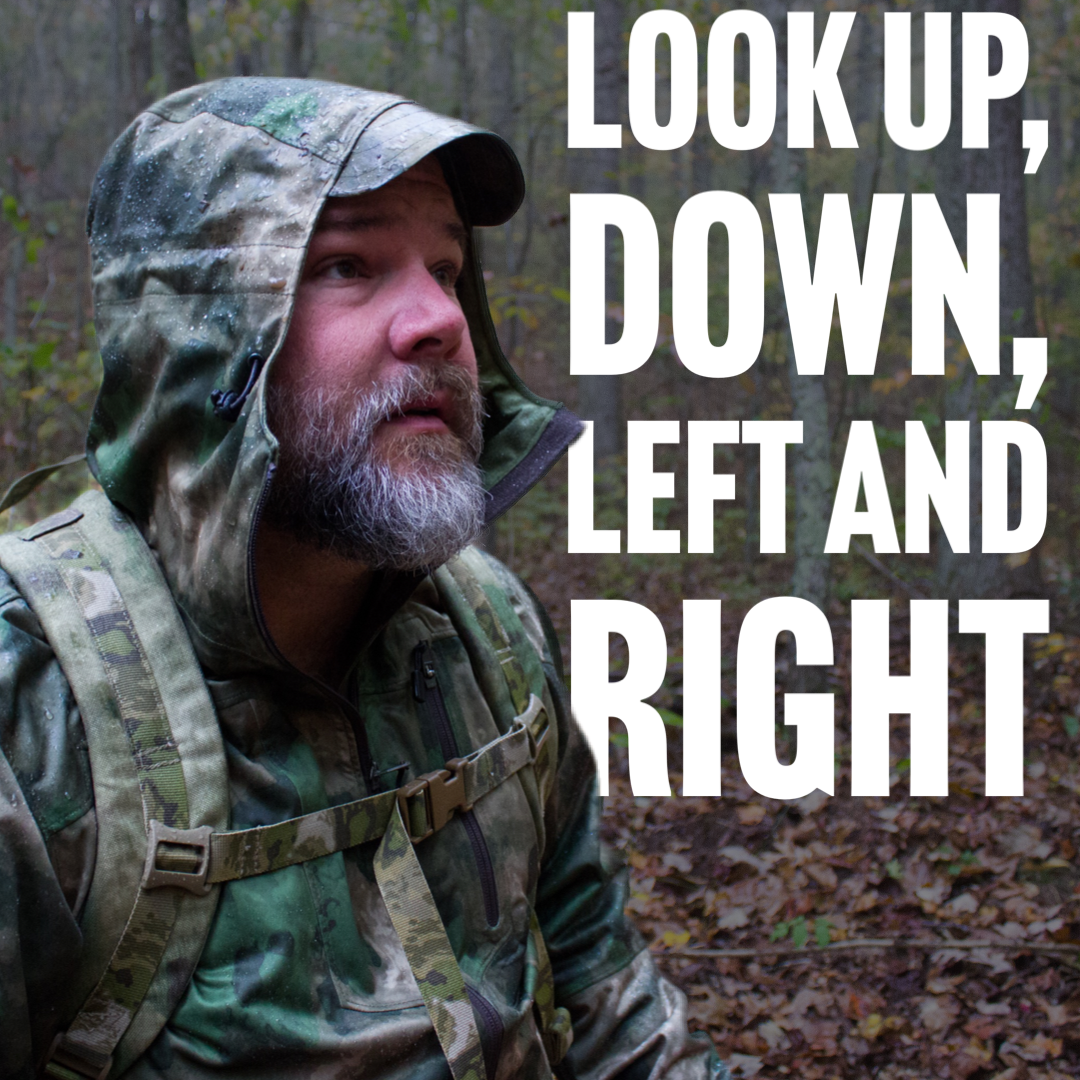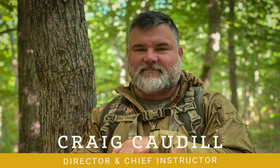
Look up, down, left and right
During a recent discussion on social media. The topic of shelter building safety came up. One of the things that get mentioned most often is "widow makers" and the dangers associated with them. I truly believe that is because the term "widowmaker" is cool-sounding. As it relates to mnemonic filing in our noggins that specific word stands out, and because of that, it is easy to remember.
However, there are many more concerns out there besides widowmakers. I always like watching an experienced outdoorsman find a campsite. They typically do most of what I am about to describe without even thinking about it. Those are the type of people I like to ask questions of.
My personal method of doing this (and what I teach our students) is to look up, look down, look right, and left. There are several reasons for each and I will share them with you here. Thanks for joining me, I hope it keeps you safer on your next overnight trip.
Look Up
The aforementioned widowmakers are the first item that jumps out at me but there are several other reasons for this
- Look up for not only dead snags, but dead tree cavities as well. If you want restful sleep, a good ole barred owl might keep you awake if he is resting in there.
- Tree canopy can shed water from you. If you pay attention to the branching and canopy, you can avoid most moisture falling on you. Trees shed water like an umbrella. The water hits the canopy and mostly gets pushed off to the edges. The roost system of each tree usually extends out to that same drip line because that is where most of the water will fall.
- Hornet's nest. You don't want to get set up and then find yourself under a hornet's nest. That typically does not turn out too good.
- You can avoid acorns, hickory or other hard fruits. Especially during autumn, also called fall for a reason. Not much wakes me up out of a dead sleep faster than an acorn falling directly above my head unexpectedly.
Look Down
Hammocks are cool, and I love using them, however, sleeping on the ground does work in many situations as well. There are several things to keep in mind though:
- Make sure you are not laying down on a hornet's nest, anthill or similar. You don't want to negatively affect their nesting site, and you definitely don't want them "snuggling" with you in your sleep.
- Look for toxic plants such as poison ivy. Even if you put a tarp down to cover the area, the oils will still get on the tarp. When you roll, stuff, or fold it up later, you will get those oils on you. They can still cause an allergic reaction at that point, even months later.
- Check for rocks and roots. I usually scrape all the debris out of the way to insure I am not laying down on either one. I will then put leaves back on the area. Leaves serve as an insulator and softener and can make for a better night's sleep.
Look Left and Right
- Again look for dead trees that you may hang your hammock on or may be near your sleeping area. If you are unsure if trees are dead or not, be on the lookout for a future blog on that subject.
- I like to wake up with the sun hitting on me. So I face my tarps, tent, and hammock in such a way that the sun greets me. It is a huge morale boost and helps to warm me up after severely cold nights.
- Left and right is also a reminder to check in on the prevailing wind patterns. If the wind is not blowing then you can look at your surroundings and determine this rather easily. One way is to see which side of trees has the deepest pile of leaves. (you can read several other indicators like that one in our book Essential Wilderness Navigation, chapter 7 discusses this topic in great detail).
Last and not certainly least I have a question that I ask myself in nearly every outdoor situation that I find myself (actually all situations). That question is "what am I missing?". I will often stop while tracking, hunting, hiking, writing, and just ask myself that. It forces me to get myself out of the rut that I am in at the time, and helps me to avoid focus lock. Focus lock is when a person's situational awareness is at its lowest because they are focused on a thought or item and not taking in much outside information (cell phones are an example).
So I ask myself what am I missing in general, and take the opportunity to do a better 360 scan of the area and see what else is there.
Those are a few ways to add to your safety by looking up, down, left and right. I am sure I missed some that you can add to the conversation. Add them in the comments wherever you find this blog piece.
YOu may also be interested in this blog piece that I wrote for Field and Stream on several different improvised methods for shelter setup.


Leave a comment